Looks Like a Cockroach; Sings Like a Canary
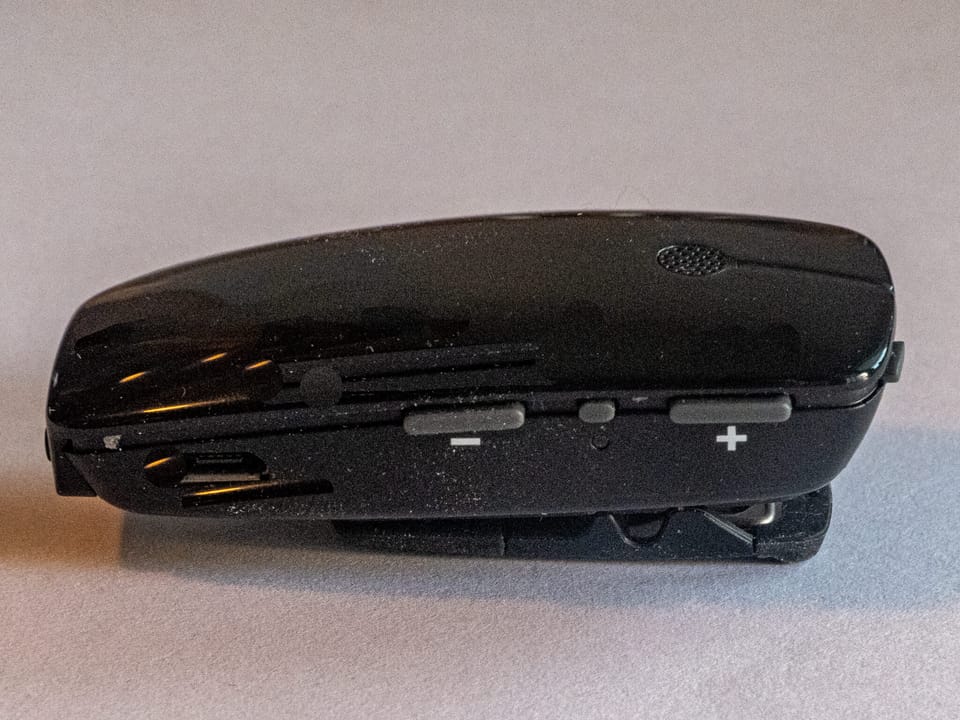
What This Blog Is About
This article is about how I am using my Jabra branded hearing aids along with a companion accessory called Multi-Mic (photo above) to address my hearing loss. I'm really excited about this, and so far it has proven to be a life-changing experience, offering new ways to stay connected and involved that were no longer available to me as my natural hearing ability declined.
If you also suffer from hearing loss, or know someone who does, read on. You may find a solution that turns out to be your own door to a longer, more fulfilling life.
Hearing Loss
Let’s face it—aging isn’t subtle. One day, you’re catching whispered punchlines from across the room. The next, you’re wondering why everyone suddenly decided to speak with marbles in their mouth.
I have age-induced hearing loss, or presbycusis if you're feeling fancy. It creeps in gradually. You may start asking “What?” a bit more often, turning the TV up louder, or thinking your friends have become mush-mouthed mumblers.
Getting a proper diagnosis from an audiologist is essential. Don't just assume you're going crazy—or that everyone else is. There are probably many qualified audiologists near you who will be happy to give you an evaluation. In my case, Costco Lincoln Park was a great choice:
- Conveniently located near my apartment
- I usually shop there once a month anyway
- The audiology exam is free, and they retain the records to establish a baseline for you
Fixing Hearing Loss
As a general rule, you can't reverse hearing loss. But there are some alternative ways to help restore something resembling lost hearing. From worst to best I tried:
- Turning up the volume on the TV, Radio, or Computer—a solution that risks driving the cat under the couch or prompting a flood of text messages from annoyed neighbors
- Headsets—Possibly useful in limited contexts, but definitely not something you'd wear to a state dinner at the White House
- Captioning—available on a whole raft of Youtube videos, Internet Programming and other similar sources, this is a quick and easy way to improve your understanding of spoken words but as with headsets, not always feasible in all circumstances.
- Hearing Aids—Today's modern versions are discreet marvels of technology that actually helps a human being. This is especially true of Bluetooth enabled aids, as we are about to explore
Identifying the Problem
Clarity is the keyword here. You haven't lost all ability to identify sounds that are within earshot; but you can't understand what they are trying to communicate.
But there are some other aggravations to deal with.
- People mumble intentionally—Baristas, bus drives and teenagers are especially guilty of this. I've noticed that many, possibly all, people will lower their voices intentionally if you "lean into them" in order to hear better. It's as if your movement closer is perceived as intimacy and they oblige by lowering their voices to an intimate (lower) level to match your body English. You wish they would shout, but the reverse occurs. You want them to shout, but instead they whisper sweet nothings in your ear. I suspect that smokers are also in this universe of perennial mumblers.
- Ambient sounds result in a cacophony of unintelligible noise. Restaurants and bars are prime examples of the worst acoustical design on the planet; they nearly all feature hard surfaces on nearly 100% of the interior. The sounds of clinking glassware and cutlery echo like shouts into the Grand Canyon. Every person in the room is probably shouting, or nearly so, because even with normal hearing, it is next to impossible to carry on a conversation with the person seated next to you. Now add the multiple large TV screens that are blaring sporting events, news or talk shows, no two screens showing the same programming or punching out the same sounds, all of it at the highest volume that it is possible to maintain without damaging human hearing. It's like walking into Dante's tenth circle of Hell.
- Not wearing your hearing aids consistently—really your own fault. You must wear your hearing aids consistently to achieve best results. That means daily. Not "when I feel like it" or "when I want to watch TV" but all the time you're awake. It only takes a few seconds to put them on and the outcome is significantly improved when you do this every morning as part of your morning routine—along with your meds and coffee and breakfast. The human brain is very plastic, but not instantaneously. It takes time for your brain to adjust to the difference in sound perception that results when you wear hearing aids. The only time I remove my hearing aids during the day is at the gym, in the shower. I carry the charging case with me to the gym, take the aids out of my ears and hit the shower. After dressing, I look at the CTA transit app to see if a bus is coming and if time is short, I may just wait and put them back in my ears on the bus ride. They are that easy to wear, and a lot easier than contact lenses (that I also wear.) If there's no bus due, I just sit on a park bench at the bus stop and put them in my ears as I wait for the bus. Nobody gives me a second glance as I do this.
🚫 The Worst “Solution”: Withdrawing from Life
Withdrawing from community, family, and social engagement is not a coping strategy—it’s a hazard.
Why It’s So Dangerous
- Social isolation is linked to approximately a 32 % higher risk of premature death compared to those with healthy social engagement ([beltonehearingaid.com][1], [aimhearing.com][2]).
- Loneliness, while slightly less deadly, still raises mortality risk by around 14 %, as confirmed by a comprehensive meta-analysis of nearly 2 million individuals ([JAMA Network][3]).
- In older adults with untreated hearing loss, the odds of social isolation double—hearing loss profoundly increases withdrawal from social life ([PMC][4]).
- Hearing loss also contributes to depression, cognitive decline, and dementia risk—factors that amplify mortality and erode quality of life ([Health][5]).
The NYU Langone ACHIEVE trial further showed that seniors who received hearing aids and counseling maintained deeper, more diverse social networks over three years—and these connections may be life-preserving ([NYU Langone Health][6]). Another longitudinal study found that untreated hearing loss and subsequent social isolation significantly elevated the likelihood of cognitive impairment and dementia later in life—especially when compounded by reduced brain stimulation ([onlinelibrary.wiley.com][7]).
🧭 The Bottom Line
- Hearing loss does more than make things quieter—it slowly cuts off the threads that tie a person to their community, identity, and joy.
- Social isolation isn't just sad; it's as dangerous to health as smoking or obesity—and hearing loss is often the entry point ([beltonehearingaid.com][1:1]).
- While loneliness is an emotional experience, isolation is the measurable reality—and both are strongly linked to negative health outcomes.
- Tools like the Multi Mic, along with quality hearing aids, streaming apps, and consistent use, help rebuild social connection—reducing risk and restoring participation.
Modern Advancements
The advent of Bluetooth has resulted in some great leaps in hearing assisted technology. What I am about to describe here is my particular solution using Jabra brand products. Other brands are available as well, but may differ in feature particulars, functionality, price and availability. Jabra is a consumer brand that is essentially a GN Group Resound product in disguise. It is available at Costco at very favorable prices. Costco has trained Audiologists who will test your hearing and make recommendations at no charge. However, you may want to check with your own Audiologist for recommendations.
Cell Phone App
The Cell Phone app generally permits two things:
- Control of the various features of your hearing aids from your cell phone rather than having to fumble with strange tiny key presses on each hearing instrument
- Streaming of direct audio content from your cell phone to your hearing aids, bypassing the intermediate step of first playing the content on the cell phone speaker and then trying to get your hearing aids to pick up and understand the sound—with Bluetooth it's a direct connection and clear as a bell
External Bluetooth Bridge (Multi-Mic)
The Bluetooth bridge allows you to connect external sources of audio directly to your Bluetooth hearing aids. It is an accessory that you must purchase in addition to the hearing aids, but it works in connection with your cell phone app and your hearing aids to provide clear and easily understood sound.
Since each manufacturer of Bluetooth enabled hearing aids uses a private and unpublished protocol, devices are not interchangeable; you cannot mix and match. In my case I have Jabra hearing aids that I got from Costco, along with the Multi-Mic bridge. Jabra from Costco is essentially Resound technology from GN Group in disguise. Buying from Costco gives you cutting edge technology, trained audiologists, and firmware updates along with the Costco price advantage that can be from 40% to 50%.
The Multi-Mic is pictured at the top of this blog post, and is barely two and a half inches long (6 cm) but packs an amazing amount of functionality into a small device.
How the Parts Work Together
Just to be clear, there are three components to this solution:
- Your Jabra hearing aids are the heart of everything. Without those hearing aids, that place a small speaker in each ear, the rest of the system won't help.
- Your cell phone app does two things:
- It controls your hearing aids and all the settings that are available to improve the hearing experience
- It will also stream directly to your hearing aids—for example the audio from a phone call will be transmitted directly to your hearing aids providing crystal clear sound
- Your Multi-Mic is able to connect any of four different audio sources directly to your hearing aids—this is similar to the way your phone streams audio, except with Multi-Mic you can choose from among four options:
- The built-in microphone from Multi-Mic
- A T-COIL source—commonly used in public venues such as theaters and churches to aid people with hearing impairments
- A line level audio source such as the speaker or earphone jack on your computer or similar device—this requires a 3.5mm TRS cable, a universally adopted standard
- An FM Receiver Euro plug compatible input—a legacy system still used in some public spaces.
https://beltonehearingaid.com/patient-resources/linking-hearing-loss-to-social-isolation-and-mortality-a-vital-perspective/?utm_source=chatgpt.com "Linking Hearing Loss to Social Isolation and Mortality: A Vital ..." ↩︎ ↩︎
https://aimhearing.com/patient-resources/hearing-loss/the-vital-link-between-social-isolation-loneliness-and-hearing-loss-understanding-the-increased-risk-of-mortality/?utm_source=chatgpt.com "The Vital Link between Social Isolation, Loneliness, and ..." ↩︎
https://jamanetwork.com/journals/jamainternalmedicine/fullarticle/2833601?utm_source=chatgpt.com "Hearing Intervention, Social Isolation, and Loneliness" ↩︎
https://pmc.ncbi.nlm.nih.gov/articles/PMC8292986/?utm_source=chatgpt.com "Hearing Loss, Loneliness, and Social Isolation" ↩︎
https://www.health.com/hearing-aids-mortality-risk-8422313?utm_source=chatgpt.com "Wearing Hearing Aids May Reduce the Risk of Early Death, New Study Finds" ↩︎
https://nyulangone.org/news/addressing-hearing-loss-may-reduce-isolation-among-elderly?utm_source=chatgpt.com "Addressing Hearing Loss May Reduce Isolation Among the ..." ↩︎
https://onlinelibrary.wiley.com/doi/10.1111/ajag.13363?utm_source=chatgpt.com "Hearing loss, social isolation and depression in ..." ↩︎
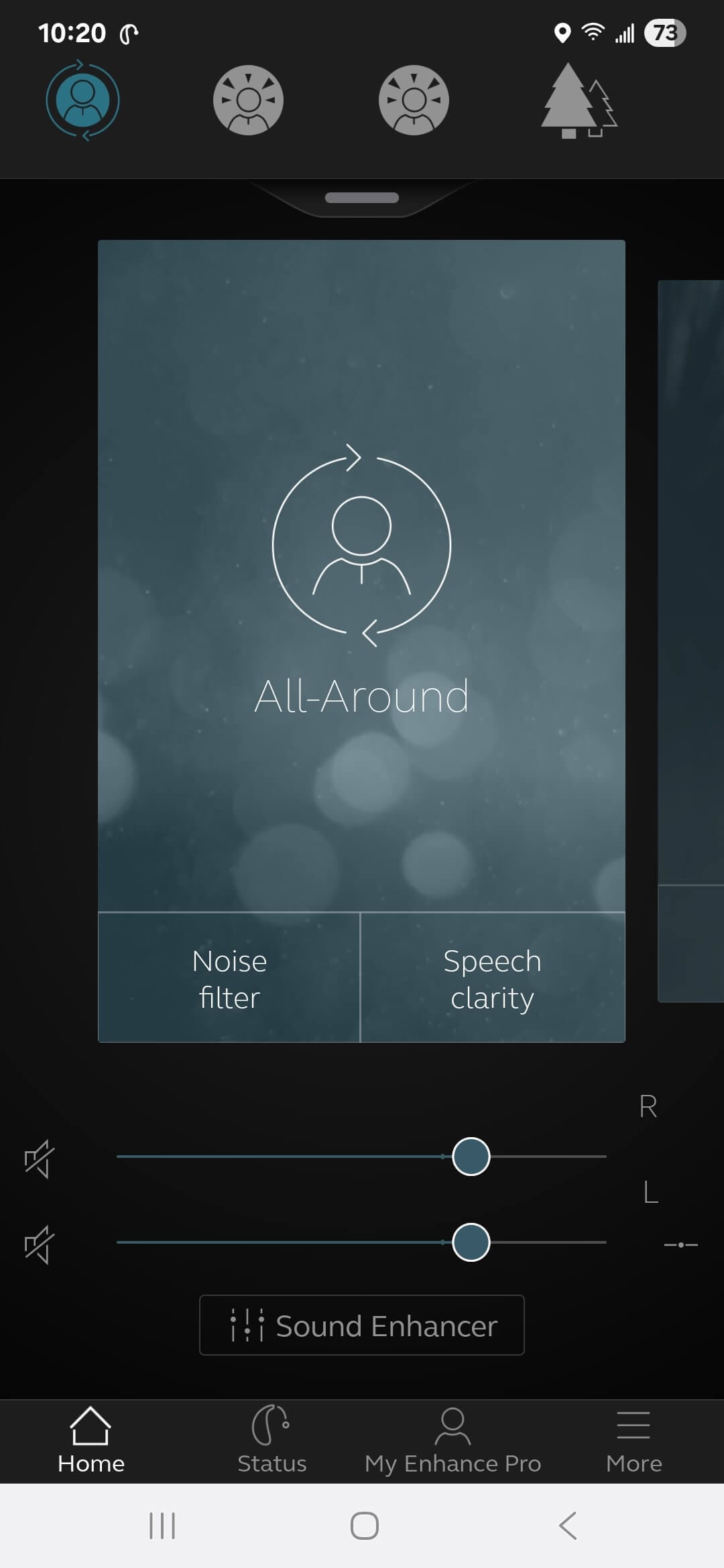
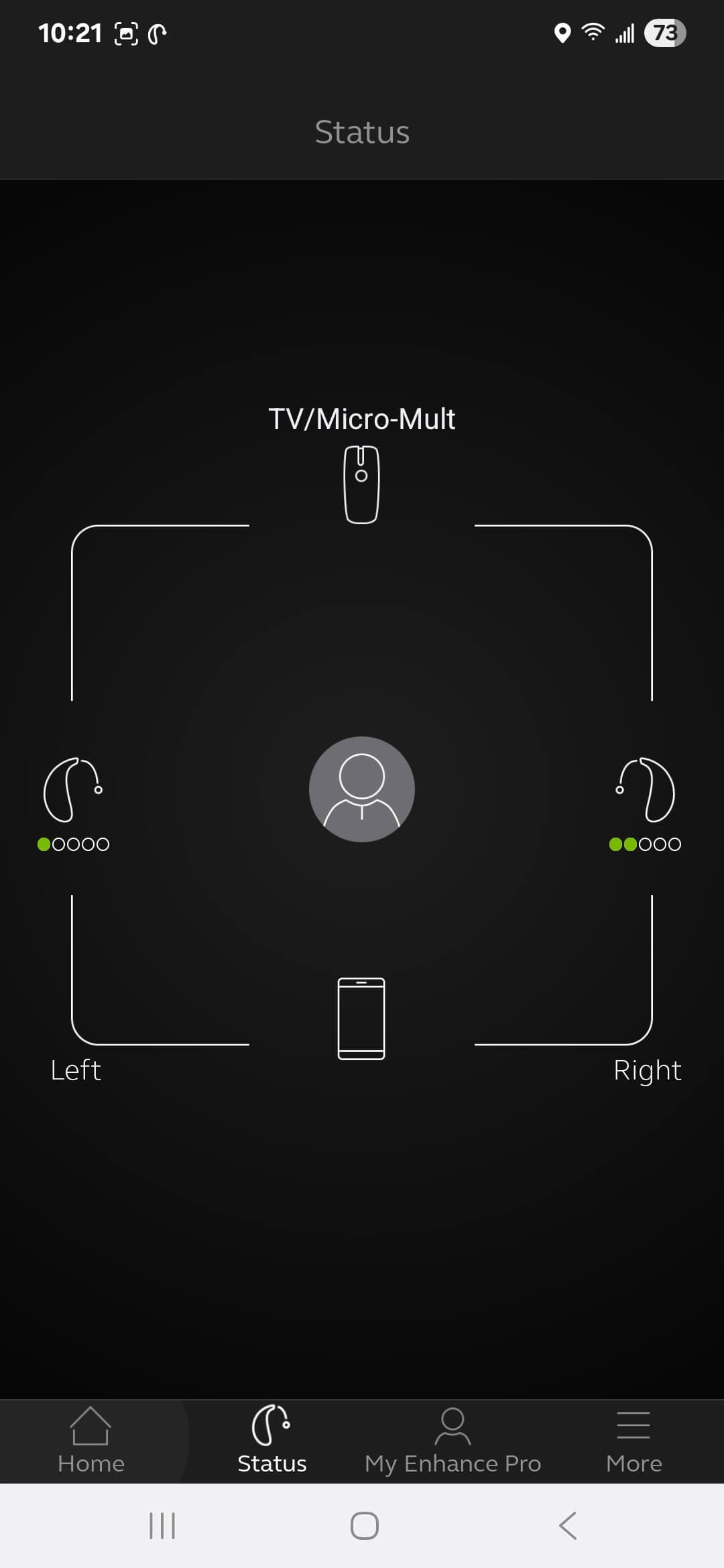
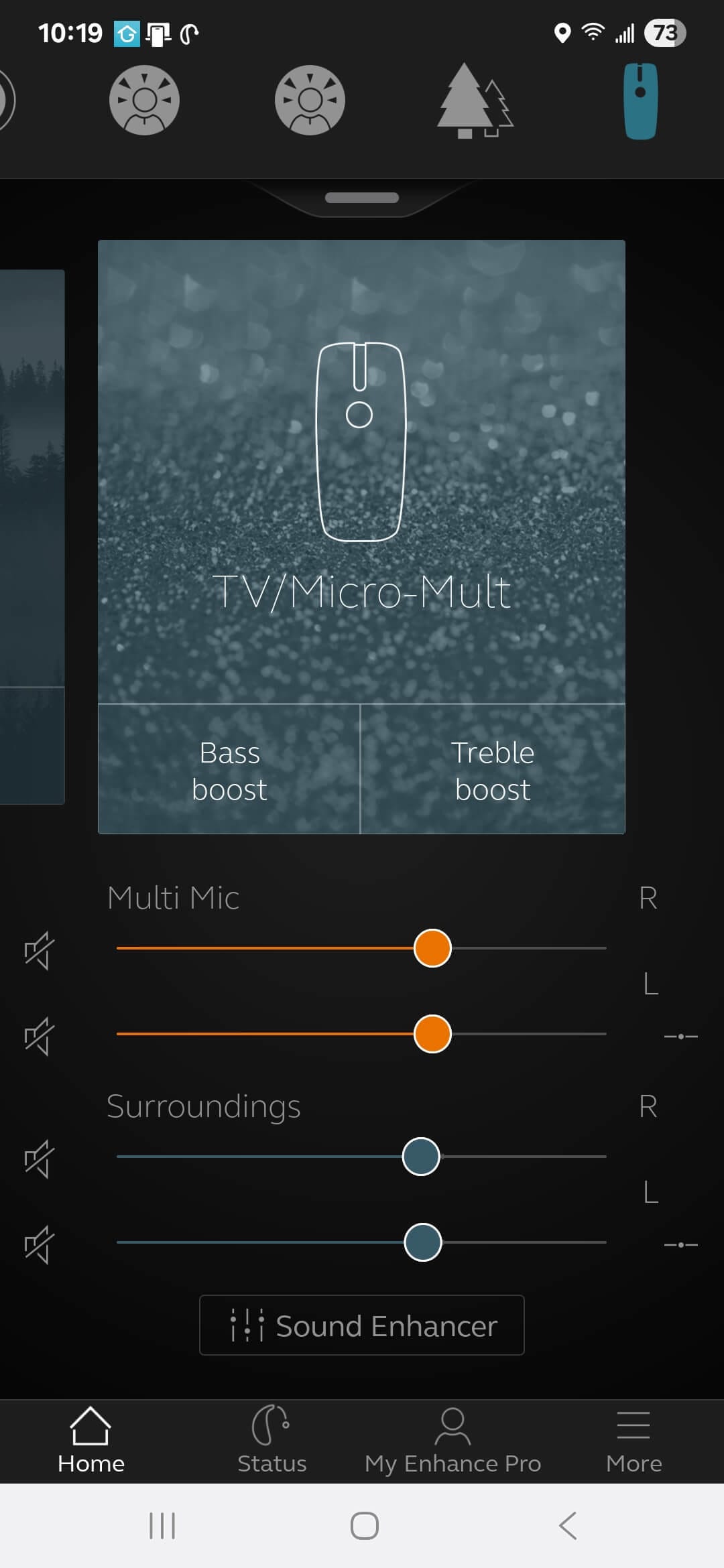
The Jabra app, showing various screens.
Multi-Mic in Action
Let's assume your hearing aids have been paired to your cell phone and your Multi-Mic. Your audiologist has probably already taken care of this for you. In the first screen, the Home tab, you can see how your hearing aids have been set. In this case, it shows "All-Around" hearing with no filters or equalizer settings made. This is a typical "base" or starting point for most people. As you become more experienced using the app, you'll probably discover your own favorite ways to adjust your hearing environment.
Normal Operation
At this point, if you receive a phone call or decide to play your favorite songs, the sound will transmit directly to your hearing aids. There is a caveat with this, however, and cell phones can be finicky, so you may have to adjust your cell phone Bluetooth or sound settings from time to time to correct anomalies that prevent you from enjoying crystal clear sound. I have often found that simply rebooting the phone solves a lot of issues without having to invest a lot of cognitive energy on bug-shooting.
Your hearing aids will also pick up ambient sounds through their microphones in each ear, so what you hear will be a combination of the streaming content and the ambient sounds.
Connecting the Multi-Mic
Assuming your Multi-Mic is fully charged and ready to go, use a long press to turn the unit on. Then select your desired audio source. For practice the first time, just using the default built-in microphone will allow you to learn how to use the device and hear your own voice since you're holding the Multi-Mic in your hand.
When you turn the Multi-Mic on and wait a few seconds, it will also connect directly to your hearing aids. Your hearing aids will be connected to two audio sources, as shown in the center photo—hearing aids are connected to your cell phone and your Multi-Mic.
Controlling the Multi-Mic
Go back to the Home screen and swipe to the left until the screen shown in the third image. This is where it gets a little more complex. Think of it as a small mixing board on your cell phone. It allows you to control the gain for the Multi-Mic and hearing aid surroundings independently, so you can balance the inputs from all sources. Each ear can be controlled independently.
You must swipe to this screen to enable Multi-Mic to use your hearing aids.
Each input has a separate set of equalizers (not shown) that you can access by touching the Sound Enhancer item at the bottom of the screen.
Use Cases
- You're in a meeting with a number of other people gathered around a conference table and you can't quite hear what's being discussed. Turn on and connect your Multi-Mic and select the built-in microphone as the audio source. Set the Multi-Mic near the center of the table. The sensitive microphone will do a better job of picking up the conversation because it is closer to the people speaking and it has a larger and more capable microphone than it is possible to fit in your hearing aids.
- You're editing a video that you want to upload to YouTube, but the sound quality you hear using just the computer speakers and your hearing aids makes it difficult to judge the quality and intent of your editing efforts. Plug your Multi-Mic into the headphone jack of your computer and select the line level source as input. The Multi-Mic will transmit the audio from your editing software directly to your hearing aids with no noticeable latency and you'll suddenly start to understand what's being said in those interview clips with a local politician.
- You're meeting with a colleague in a cubicle that is surrounded by many other cubicles. This makes loud conversations disturbing, yet you are unable to understand your colleague when they speak in a subdued manner. Use your Multi-Mic with the built-in microphone as the audio source and ask your colleague to clip the Multi-Mic to a lapel, shirt or blouse collar or similar location near their mouth. You'll now be able to hear clearly and easily without strain or endless repetition. (Don't forget to get your Multi-Mic back after your meeting ends and you leave for your own cubicle.)
- Your oldest child has been cast in an important role for the High School play, but these are all amateur performers and often fail to project adequately, making it difficult for even persons with normal hearing to fully understand. The venue has a T-Coil system deployed for the performance. Use your Multi-Mic setting it to T-Coil. This will receive the T-Coil signal and transmit the audio directly to your hearing aids.
- Other situations that your own experience will probably suggest. There are many ways to use your Multi-Mic to enhance the hearing experience.
Conclusion
- Get your hearing tested
- Buy the best hearing aids you can afford
- With Streaming
- With phone app
- With Multi-Mic or similar either immediately or as a future purchase
- Wear your hearing aids every day
- Learn how to use your technology, which can be daunting, but well worth the effort.
- Stay connected with life and all that it has to offer


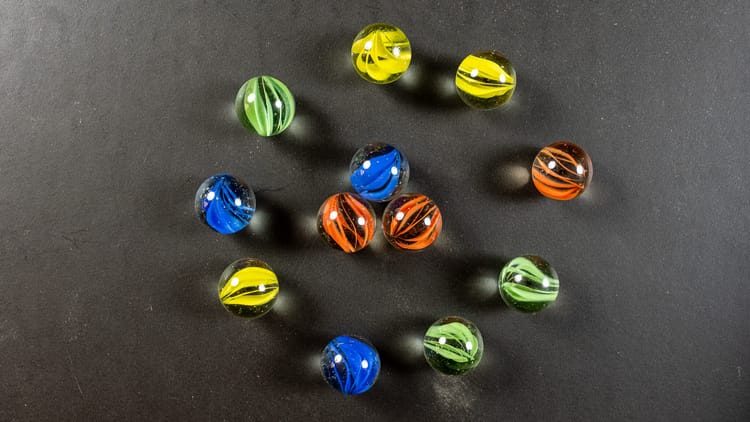

Comments ()